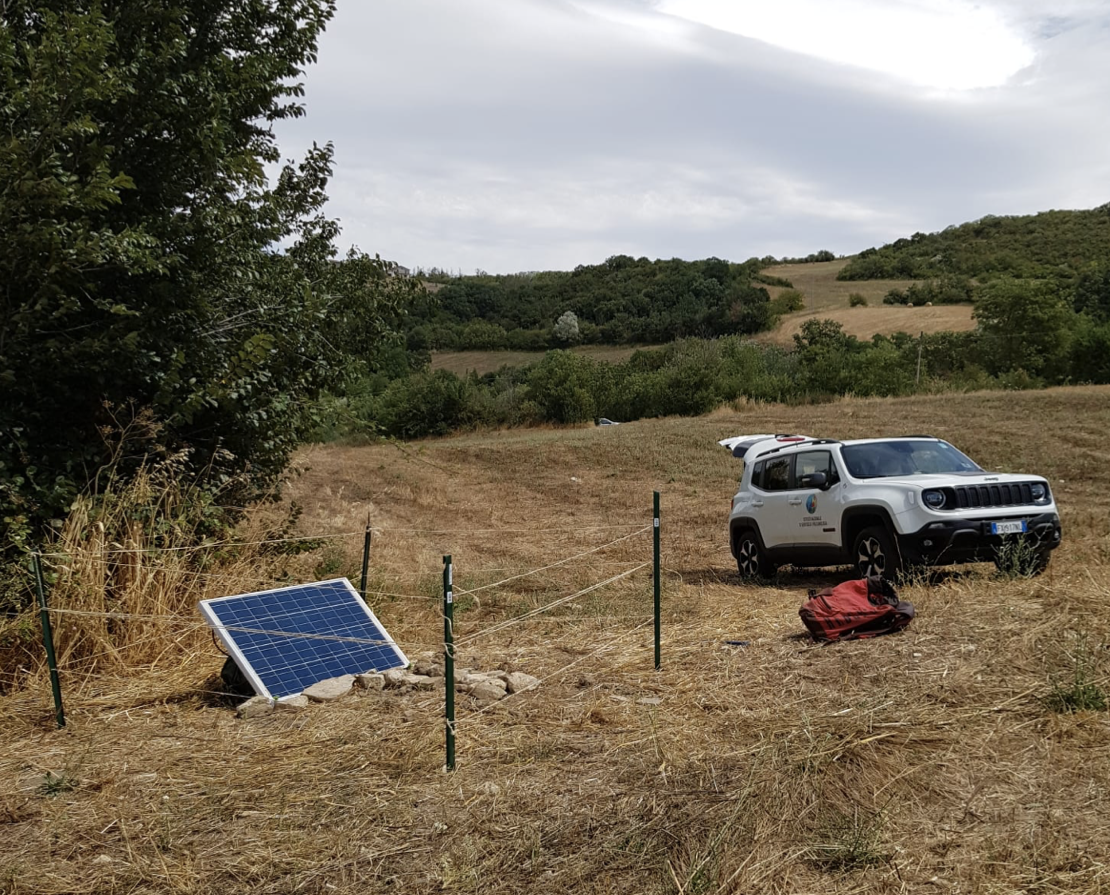
Map of the study area. Black triangle: permanent INGV stations. Red and orange triangles: new temporary stations installed around the Mefite d’Ansanto area. Yellow diamonds indicate the Mefite d’Ansanto degassing site.

the Station FR05 installation site.

Zhu and Beroza (2019)

An example of application of template-matching. The waveforms of a known earthquake (in red) are compared to the continuous recording allowing the detection of new, highly similar events below the usual detectability threshold.
W.P.1: High resolution Earthquake Catalogs
High-resolution earthquake catalogs are one of the prerequisite for the understanding of the relation among seismicity, crustal fluids, physical-hydraulic rock properties and fault-zones
To enhance the earthquake catalog in the Mefite d’Ansanto area, we combine several and complementary approaches.
1) Densification of the INGV permanent seismic network, through the installation of 10 temporary seismometers that will continuously record for 1.5 years. The covered area is about 30x30 km, centered around the Mefite d’Ansanto CO2 degassing site
Map of the study area. Black triangle: permanent INGV stations. Red and orange triangles: new temporary stations installed around the Mefite d’Ansanto area. Yellow diamonds indicate the Mefite d’Ansanto degassing site. On the lower right corner, the Station FR05 installation site.
2) Earthquake detection through machine-learning techniques. Deep-learning algorithms trained on past earthquakes can greatly enhance our ability to identify small-magnitude seismicity. Moreover, deep-learning methods show very good performance in picking S-wave arrivals: this may improve our knowledge about the shear-wave velocity structure.
Zhu and Beroza (2019)
3) The newly identified earthquakes will be used as “patterns” for the application of template-matching. This will enhance the detection of similar events of small magnitude, usually below the noise level. Such approach commonly assures a 10-folds increase in the overall number of detected events when classical identification methods are useds.
An example of application of template-matching. The waveforms of a known earthquake (in red) are compared to the continuous recording allowing the detection of new, highly similar events below the usual detectability threshold.
